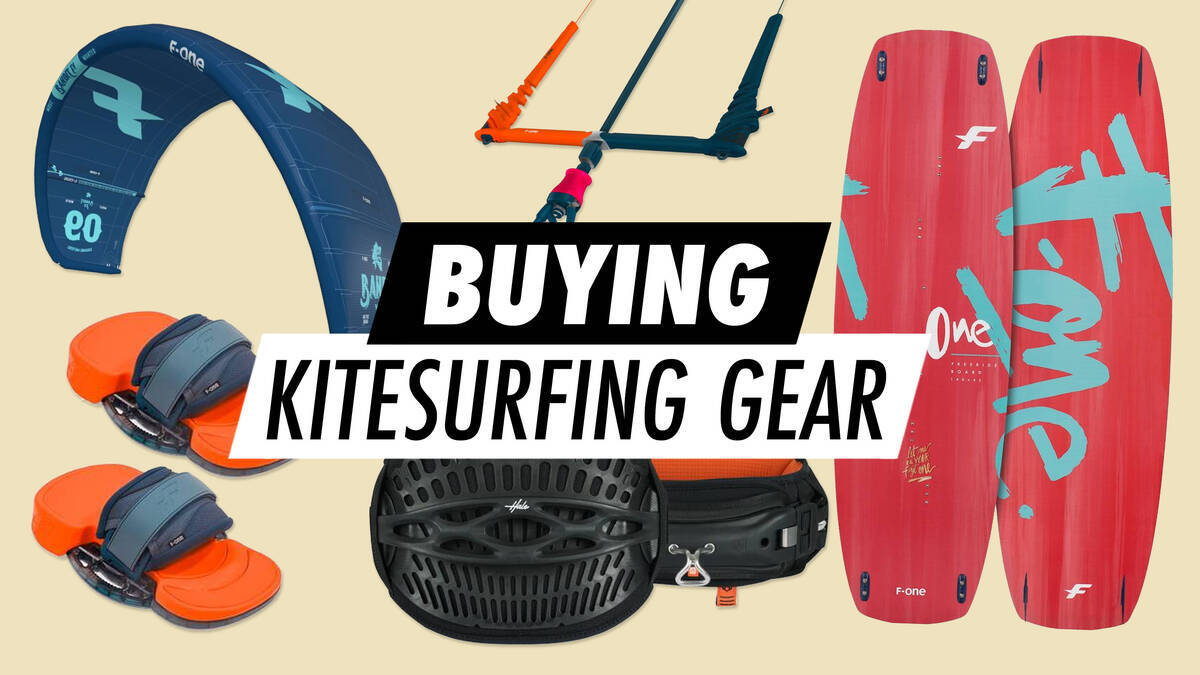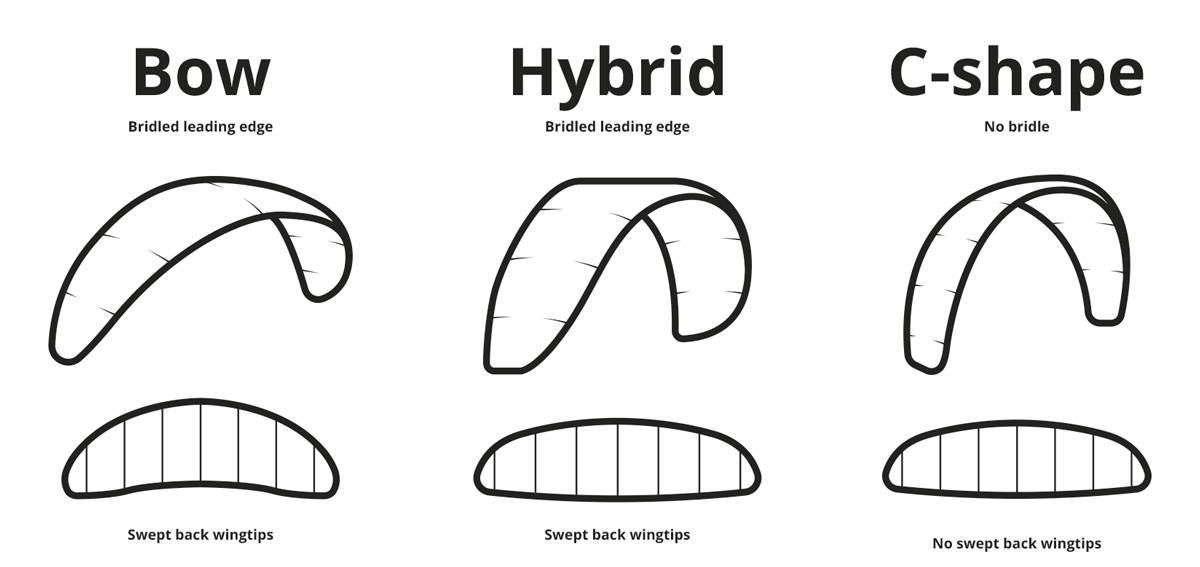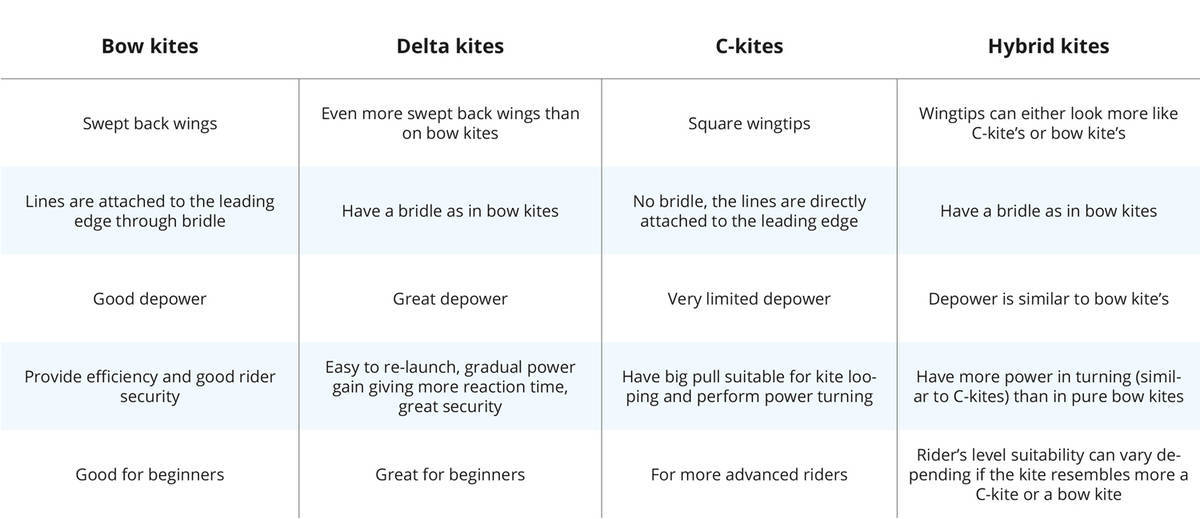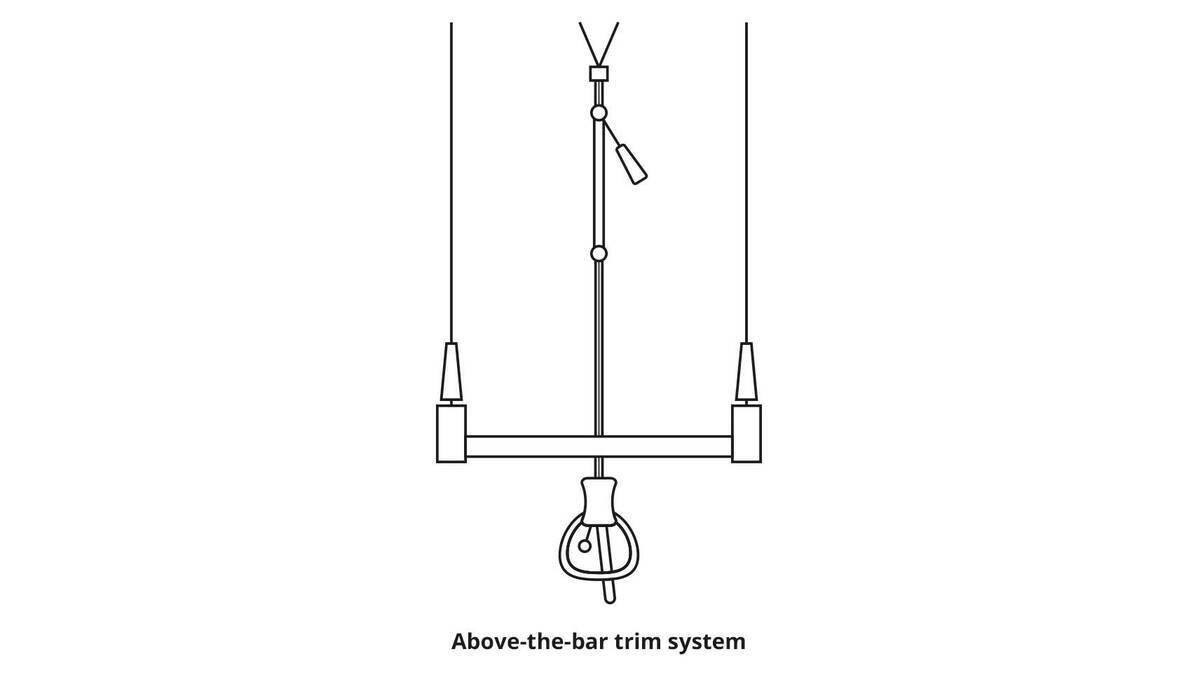Purchasing Kitesurfing Equipment

The kiteboard and the kite are the most vital equipment in kitesurfing. Here is some valuable information to assist with your choice.
1. The Kite
Kites come in various shapes, sizes, and constructions. The principal categories include Bow kites, Delta kites, C-kites, and Hybrid kites, each suitable for distinct conditions due to their unique attributes. It's essential to investigate the wind conditions at your desired kitesurfing location, as wind strength profoundly influences kite selection. Generally, larger kites are preferable for lighter winds, whereas smaller kites are more appropriate for stronger winds.

The chart below elucidates two significant terms that differentiate these kites, which are crucial to comprehend.
The bridle is a line system attached to the leading edge of your kite. These lines can be configured differently depending on the kite model. Resembling a spider web at the kite's leading edge, they converge into a single line to which your bar lines are connected. Essentially, the bridle enhances kite control, particularly in terms of power management. For instance, no-bridle C-kites offer an explosive power gain that facilitates potent turns and loops but requires more advanced skills.
The bridle, therefore, permits a greater degree of depower than the C-kite configuration. Depowering involves flattening your kite, reducing the surface area exposed to the wind, and consequently diminishing its pulling force.

2. Bar and Lines
To steer your kite, you require the bar and lines. A kite harness is necessary, which connects to the chicken loop on the bar. By doing so, you also attach to the lines, granting you control over the bar, lines ('your steering wheel'), and ultimately, the kite.
The bar and lines enable you to steer your kite, execute turns, and adjust speed. Numerous variations exist concerning the bar and line set-up, with the 4-line bar being one of the most common. In this configuration, the two central lines link to the leading edge via the depower system, while the outer lines, connected to the bar's ends, attach to the wing tips, facilitating steering, depowering, and powering. These are typically colour coded and matched with the bar tip lines for easy and accurate connections.

When examining the bar closely, you'll find several configurations, contingent on the manufacturer. The most prevalent distinction is the 'above-the-bar trim system' and 'under-the-bar trim system'. The former provides more movement freedom but can make depowering a bit harder to reach. Conversely, the latter offers easier access as the depower is closer, though it may pose accessibility challenges.

It's crucial to note that when altering the lines, you must always select the correct length compatible with your specific kite model, as incorrect lengths can compromise your accustomed kite control.
3. The Kiteboard
The kiteboard is another key element in kitesurfing. Similar to other board sports, several core aspects define kiteboards:
- The shape: You can select either a twin tip (symmetrical front and back) or a directional (surfboard) shape. Additionally, boards can be square or round. Square shapes excel in edging, upwind travel, and pop, whereas round shapes are beneficial for carving and smooth landings.
- The rocker: The rocker refers to your board's curve from tip to tail. More rocker (increased curvature) enhances pop, while flatter boards are superior for edging.
- The concave: Implementing concave (curvature between the side edges) provides a smoother ride and gentler landings.
- The fins: You have the option to use fins or go finless. Larger fins offer stability in choppy waters, ease in edging and upwind travel, while smaller fins facilitate smoother water gliding.
- The size: Different brands offer diverse size recommendations. Generally, board size is determined by your weight and skill level. The board should adequately support your weight and keep you buoyant when powered by the kite. For beginners, a slightly larger board is advisable for increased buoyancy. As your skills advance, you may transition to a smaller board for enhanced manoeuvrability.
4. Are you a novice?
If you are new to kitesurfing, ensure that you:
- Choose a suitable kite with effective depower
- Acquire protective gear (Helmet, safety knife, and possibly an impact vest)
- Enrol in an introductory kitesurfing course (Guided sessions are beneficial)
- Find a kitesurfing buddy, as it's safer and more enjoyable with a companion
